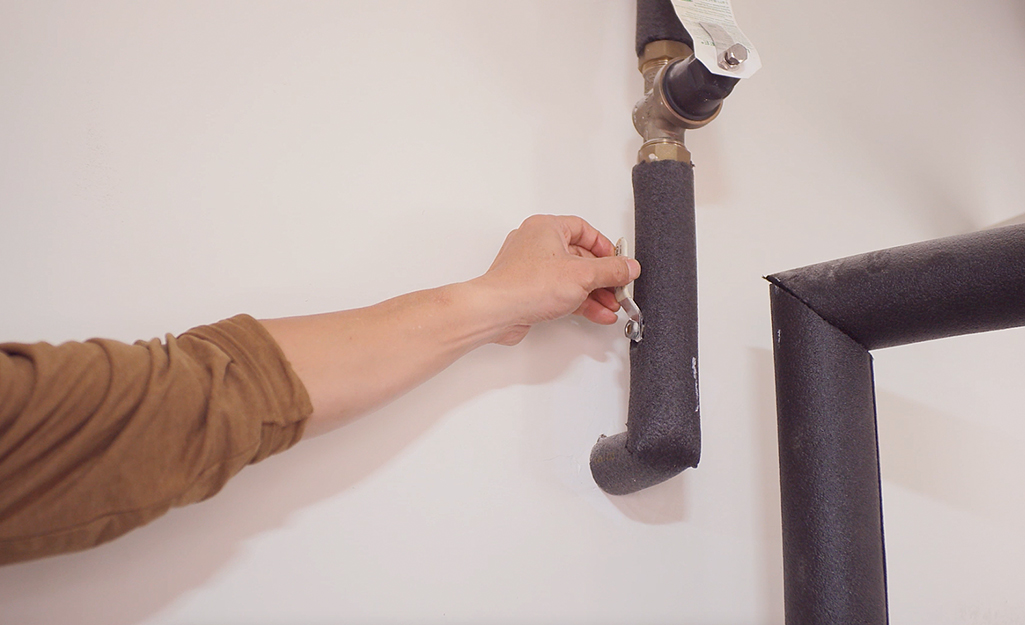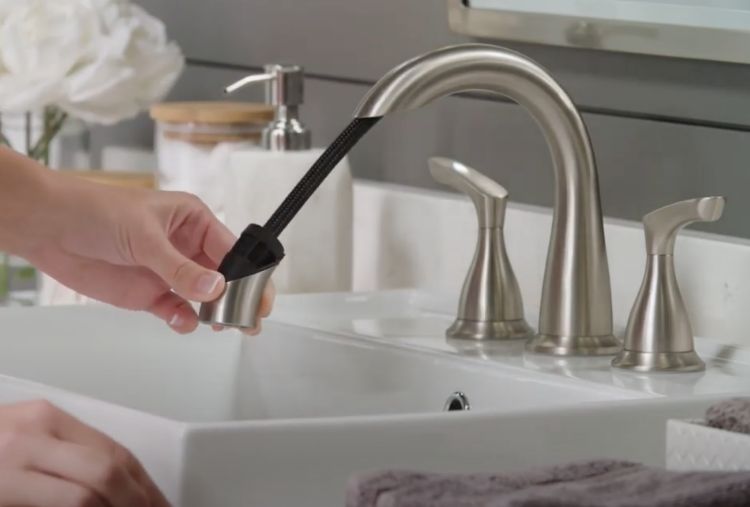The writer is making a few good points about Why Are My Faucets Dripping (And Can I Fix It Myself)? in general in this article following next.

Trickling taps could seem like a small aggravation, yet their influence exceeds just the nuisance of the sound. From wasting water to sustaining unneeded monetary expenses and health threats, overlooking a trickling tap can lead to various consequences. In this write-up, we'll delve into why it's crucial to address this common family problem promptly and properly.
Waste of Water
Environmental Effect
Trickling taps add substantially to water wastefulness. According to the Epa (EPA), a solitary faucet leaking at one drip per second can squander more than 3,000 gallons of water annually. This not only strains water resources yet additionally impacts environments and wildlife dependent on them.
Financial Prices
Raised Water Expenses
Beyond the environmental impact, trickling taps can inflate water expenses substantially. The accumulated wastage over time equates into higher energy costs, which can have been avoided with prompt repair services.
Prospective Property Damages
In addition, extended trickling can result in damage to components and surfaces surrounding the tap. Water buildup can cause staining, corrosion, and even structural problems if left ignored, leading to added fixing prices.
Wellness Worries
Mold and Mildew Growth
The constant visibility of dampness from a leaking faucet creates a suitable setting for mold and mildew and mold development. These fungi not just endanger interior air quality however additionally position wellness dangers, especially for individuals with respiratory system conditions or allergies.
Waterborne Conditions
Stagnant water in trickling taps can end up being a breeding place for bacteria and other pathogens, boosting the threat of waterborne diseases. Pollutants such as Legionella germs grow in stationary water, possibly leading to major diseases when ingested or inhaled.
DIY vs. Professional Repair
Advantages and disadvantages of DIY Repair
While some may try to take care of a leaking faucet themselves, do it yourself fixings include their own collection of challenges. Without proper understanding and tools, do it yourself attempts can worsen the concern or bring about insufficient fixings, prolonging the problem.
Benefits of Working With a Professional Plumber
Working with a professional plumber guarantees that the underlying cause of the leaking faucet is dealt with efficiently. Plumbers possess the know-how and devices to identify and fix faucet issues efficiently, conserving time and reducing the threat of further damages.
Step-by-Step Overview to Repairing a Dripping Tap
Tools Called for
Before trying to repair a dripping tap, gather the necessary devices, consisting of a flexible wrench, screwdrivers, substitute components (such as washing machines or cartridges), and plumber's tape.
Common Tap Issues and Their Solutions
Identify the type of tap and the specific concern triggering the drip. Typical issues consist of damaged washers, corroded shutoff seats, or defective O-rings. Describe manufacturer instructions or online tutorials for detailed support on repair services.
Safety nets
Normal Maintenance Tips
To prevent leaking taps, do regular upkeep such as cleansing aerators, inspecting for leakages, and changing damaged components without delay. Additionally, consider setting up water-saving gadgets or upgrading to much more efficient fixtures.
Importance of Prompt Repairs
Attending to leaking faucets as soon as they're seen protects against additional water wastage and potential damages, eventually saving both water and cash over time.
Impact on Home Value
Assumption of Well-Maintained Property
Keeping a building in good condition, including resolving maintenance concerns like dripping taps, boosts its regarded value and desirability among potential purchasers or occupants.
Impact on Resale Value
Properties with well-maintained plumbing fixtures, consisting of faucets, command higher resale values in the realty market. Resolving dripping faucets can contribute to a positive perception during property inspections and negotiations.
Environmental Responsibility
Specific Payment to Preservation
Taking obligation for repairing dripping taps straightens with broader initiatives towards water conservation and environmental sustainability. Every person's actions collectively make a substantial effect on preserving priceless resources.
Lasting Living Practices
By prioritizing punctual repairs and taking on water-saving practices, people contribute to lasting living practices that benefit both existing and future generations.
Final thought
Resolving a dripping tap surpasses mere comfort; it's a necessary step toward saving water, minimizing monetary expenses, and safeguarding health and wellness and building. Whether via do it yourself fixings or specialist assistance, taking action to fix trickling faucets is a tiny yet impactful method to advertise responsible stewardship of sources and contribute to a much healthier, extra sustainable future.
How to Fix a Leaky Faucet: Step-by-Step Repair Guide
A leaky faucet may seem like a simple annoyance, but if it's not fixed promptly, that leak could cost hundreds to potentially thousands. From water damage to mold, mildew, and high water bills, even a tiny leak can be catastrophic if left unattended. Damage like this can even affect the overall value of your home, so it's important to take the right approach for leaky faucet repair. You may need the help of a plumber in some cases, but we've got a few tips you can try on how to fix a leaky faucet before calling the pros.
Four Faucet Types
When you're learning how to fix a leaky faucet, the first step is knowing what kind of faucet you're working with! There are four common types.
Cartridge Faucets
Cartridge faucets come in one- or two-handled varieties. In one-handled cartridge faucets, hot and cold water combines in a single cartridge. In the two-handled versions, hot and cold water are controlled separately and mixed in the faucet.
Ball Faucets
Ball faucets have a single lever you push up and down to adjust the pressure and rotate to change the temperature. A slotted metal ball controls the amount of water allowed into the spout.
Compression Washer Faucets
They're the oldest type of faucet, but they're still used in many homes — especially older ones. Compression faucets have two separate handles that, when turned, raise or lower the washer that seals a water valve. This valve stops water from flowing through the faucet when it is turned off.
Disc Faucets
Disc faucets rarely need to be repaired due to their maintenance-free design. The water flow is controlled by two discs — the upper one raises and lowers against a fixed lower disc, creating a watertight seal. If your disc faucet starts leaking, you may need to replace the seals or clean residue buildup from the inlets.
Fixing a Leaky Faucet
Step 1: Turn Off the Water
Whether you're learning how to fix a leaky bathtub faucet or how to fix a leaky kitchen faucet, always turn off the water supply to your working area when you're fixing a leak. The last thing you want is a flood added to your list of things to fix.
Look for the shutoff valves below your sink or around the tub and turn them clockwise to stop the water flow. If your faucet doesn't have shutoff valves, you may need to turn off the water for the whole house. Check to make sure it's off by turning the faucet on. If nothing comes out, you're ready to start the repair.
Step 2: Take Apart the Faucet
How you disassemble your faucet depends on the type of fixture you have. You can use a flathead screwdriver to remove the caps on top of the handle or handles for cartridge and compression faucets. Inside, you should see handle screws. Unscrew these with a screwdriver to remove the handle.
Disc- and ball-style faucets will typically have an inlet screw near the handle, and removing that will reveal the interior of the faucet.
Detach the Valve Stem
For cartridge- and compression-style faucets, you'll see the inner valve stem or cartridge once you remove the faucet handles. If you have a compression faucet, unscrew the brass valve stem. If you have a cartridge faucet, pull out the cartridge. If your cartridge has been in place for a while, it may require some tools or extra force to remove it due to mineral deposits.
Examine and Replace Parts
Once you've removed the parts, check them out to confirm what needs to be replaced. You may see corroded rubber washers, O-rings, stems, or cartridges. On a ball-style faucet, check the seats and springs for damage.
If you need to repair a leaky disc faucet, check the inlet and seals on the lower disc.
Once you determine what parts must be replaced, visit your local hardware store. Bring the damaged parts with you to ensure you can purchase the correct components to replace them.
Clean Valves and Faucet Cavity
If you've removed a stem or cartridge, you may notice mineral buildup in the faucet's threads. Use white vinegar to clean the valve seat by soaking it for a few minutes, then scrub it away with a soft toothbrush and rinse with warm water. You can also clean the interior of the faucet in the same way.
Reassemble the Faucet
Once your faucet is cleaned and the required parts have been replaced, it's time to reassemble it. Put the pieces back together and slowly turn the water supply back on. Doing this slowly is crucial because too much initial water pressure can damage the new hardware you've just installed.
https://homewarranty.firstam.com/blog/how-to-fix-leaky-faucet

As a fervent reader on How to Fix a Dripping or Leaky Faucet , I think sharing that post was beneficial. Are you aware of somebody who is serious about the subject? Be sure share it. Thanks a lot for being here. Don't forget to pay a visit to our site back soon.